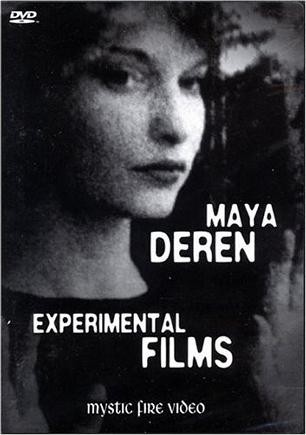“ Maya Deren (April 29, 1917, Kiev – October 13, 1961, New York City), born Eleanora Derenkowskaia (Russian: Элеоно́ра Деренко́вская), was one of the most important American experimental filmmakers and entrepreneurial promoters of the avant-garde in the 1940s and 1950s. Deren was also a choreographer, dancer, film theorist, poet, lecturer, writer and photographer. The function of film, Maya believed, like most art forms, was to create an experience; each one of her films would evoke new conclusions, lending her focus to be dynamic and always-evolving.[1] She combined her interests in dance, voodoo and subjective psychology in a series of surreal, perceptual, black and white short films. Using editing, multiple exposures, jump cutting, superimposition, slow-motion and other camera techniques to her fullest advantage, Deren creates continued motion through discontinued space, while abandoning the established notions of physical space and time, with the ability to turn her vision into a stream of consciousness. Perhaps one of the most influential experimental films in American cinema was her collaboration with Alexander Hammid on Meshes of the Afternoon. She continued to make several more films on her own including At Land, A Study in Choreography for Camera, and Ritual in Transfigured Time – writing, producing, directing, editing, and photographing them with help from only one other person, Hella Heyman, as camerawoman. She also appeared in a few of her films but never credited herself as an actress, downplaying her roles as anonymous figures rather than iconic deities.”
——http://en.wikipedia.org/wiki/Maya_Deren
This movie is very exciting though it makes
me indeed very confused. A woman picked up a flower, opened the door, a knife
on the bread, went to upstairs, slept in a chair…… the repeated scenes and the
provoking changes make me very confused. As the story progressed, I think the
woman is dreaming and the dream shows her disturbance and suspicion of man.
I guess the door stands for her mind, and
the man comes into it. But she is afraid of his thoroughly master of her. As a
result, the man becomes a mirror-face person in her dream. In the end, the
woman dies in her suffering caused by herself.
Another things of the movie impresses me a
lot is the way it uses to show the woman`s psychological
activity. Such as the shaking stairs, the key dropped out, the changing of the
key and the knife…… Although this way to tell a story is quite strange and we
may get confused, it is actually very interesting. What`s more, as an experimental
films, it is a successful work I think.
























,+1979-1986.jpg)

